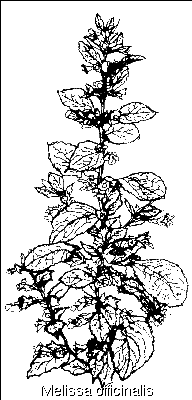ROSEMARY
(Rosmarinus officinalis)

Appearance
This is a dense, evergreen, aromatic, perennial shrub. Leaves
are leathery and folded inwards along the margins, green and rough
above and white-felted below. Flowers which appear from January to
March (all the year round in cultivated varieties) lilac pink in lax
clusters.
Habitat
Very rare as a wild plant in Cyprus but is probably indigenous
between Yialousa and Ronnas bay on the Karpas Peninsula, on maritime
rocks and fixed sand dunes near sea level, though it is possible
that it was introduced there , accidentally, in the remote past. Widely
cultivated elsewhere on the island..
Uses and Properties
The flowers of rosemary are very attractive to bees and the
famous Narbonne honey is derived largely from this plant. The
flowers and leaves of rosemary are rich in the essential oil, olio
rosemarini, which is an essential ingredient of Eau de Cologne, hair
lotions, cold creams etc. Plant has antiseptic, tonic and insecticidal
properties. An infusion from the leaves can be used as a digestive.
Leaves boiled in wine are traditionally used for bruising or arthritis.
In the middle ages "Hungary water", a preparation for rheumatism using
rosemary invented for Queen Elizabeth of Hungary was extremely popular,
especially after it proved so revitalising to the Queen that the King
of Poland proposed marriage! Rosemary was also used to fumigate
hospital wards in the Middle Ages. Rosemary is also supposed to
strengthen the memory. Students in ancient Greece would wear garlands of
it around their heads during exams. There may be some truth to these
theories as rosemary is now known to stimulate local circulation. In
modern medicine rosemary is used as a stimulant to the circulation and a
tonic to the nervous system being excellent for relieving headaches and
migraines. Externally it is useful in rheumatic complaints and for aiding
blood flow to the scalp in conditions of hair loss or dandruff. Rosemary
has always been seen as a plant of graves and cemeteries in many cultures
and civilisations. The Greeks and Romans regarded it as important in
religious ceremonies and as a symbol of fidelity. In cookery rosemary
is sometimes used as a conserve or for jam making and also with roast meats
in stuffings marinades and egg dishes. It is also good with sweeter
things such as jelly and fruit drinks and as a tea.




